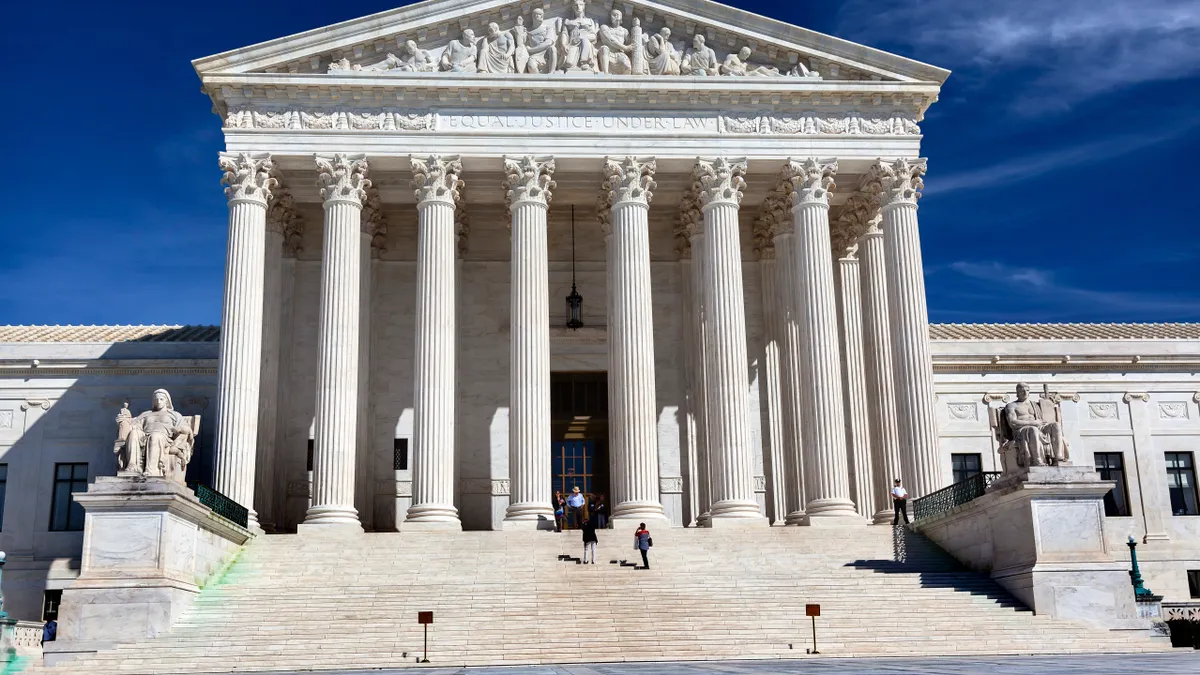The U.S. Supreme Court is set to hear a crucial case on the First Amendment this week that could, depending on its outcome, have significant fallout for public schools. “It will be a virtual earthquake,” Randi Weingarten, president of the American Federation of Teachers, an organization that is a key player in the case, warned.
Espinoza v. Montana Department of Revenue, set to be heard Wednesday, could go a number of ways. And while the final decision is up in the air, here is what we know so far and what it could mean for public schools.
How it started
In 2015, the Montana legislature created a tax credit program to provide dollar-for-dollar tax credit of up to $150 for individuals and businesses who donate to private scholarship organizations that fund scholarships for students to attend private schools.
Soon after, the Montana Department of Revenue issued a rule barring families from using the scholarships for religious schools, suggesting doing so would mean violating the state Constitution’s Blaine Amendment, a “no aid” clause that prevents the government from providing direct aid to educational institutions with a religious affiliation.
A legal battle ensued in the lower courts and, most recently, the Montana Supreme Court found the tax-credit program violated the state's constitution, suggesting giving a tax benefit to a religious school would be akin to aiding the church.
The ruling rejected the plaintiff’s argument that siding with the state constitution would violate:
- The First Amendment’s free exercise clause, which protects the right to religious practice.
- Its establishment clause, which prohibits the government from creating any law “respecting an establishment of religion."
- Its equal protection clause, which requires the government to apply the law without discrimination.
These amendments, plaintiffs argue, “all demand that the government show neutrality—not hostility—toward religion in student-aid programs.”
But a number of educational organizations, civil rights groups and others disagree, saying the plaintiffs have no injury in the case.
“[Montana’s ruling] wasn’t to invalidate access to tuition scholarships, it was simply to invalidate tax credits that contribute to organizational scholarships,” David Strom, an AFT attorney, said. “The state should be able to make that decision to not dedicate its revenue to vouchers.”
What could happen
The question of state funding for religious schools brought to the bench by Espinoza v. Montana Department of Revenue hits close to a 2017 Supreme Court case, Trinity v. Lutheran, which could likely make an appearance in the oral arguments Wednesday.
While in the latter case, the Supreme Court held that Missouri violated the free exercise clause when it barred the church from receiving the playground subsidy, which was otherwise available to everyone, justices at the time explained they intentionally left open the question of “religious uses of funding or other forms of discrimination.”
This case could potentially address that footnote or, Strom said, the court could wait for another case to take up the question it left unanswered if justices decide they don’t have before them a case with injury.
Another question for the bench to consider, he said, is: “When you have a generally publicly available voucher program that has been applied only to non-religious schools, and religious schools have been excluded, does the Free Exercise Clause have any impact on that state constitutional provision?"
The potential fallout for public education
Answering these questions could extend beyond just the funding of state voucher programs. If decided in the direction of the defendants, the court could technically, although not likely, deny very basic services to religious institutions like state-funded police and fire protection.
Or it could follow the precedent of a 2004 ruling in Locke v. Davey, when the court upheld a scholarship program in Washington (another state with a permutation of the Blaine Amendment) that could be used to fund education at religious colleges and universities, but only for students who did not pursue a degree in “devotional theology.”
According to that decision, while a state might not be allowed to exclude religious institutions from public programs, it may be able to say it won’t fund particular activities that are inherently religious in character.
Decided entirely in the other direction, it could effectively overturn the Blaine Amendment, a provision in Montana and at least 37 other state constitutions that prohibits those states from spending money to “aid” churches and other religious institutions, and make mandatory the public funding of religious schools.
This, educators worry, could “siphon off public funds” for public education that are already scarce. “What about funding the almost 90% of parents who choose to send their kids to public schools?” Weingarten said, adding this case is another push to expand school choice and charter programs and could “decimate public education.”
And, if this case does lean in the direction of funding religious schools, educators also worry the public dollars for religious schools could eventually lead state-sponsored religion, considering a vast majority of religious schools are Christian.
“This could turn the First Amendment on its head and pervert its purpose,” Weingarten said. “What happens if a school says it believes the Biblical story of creation is the scientific basis for evolution?”
But, Weingarten pointed out, with federal funds comes federal oversight and accountability. “It’s also going to undermine [religious institutions'] freedom and their latitude to do what they see fit.”
Instead of rationing money in favor of religious or public schools, she said, “Why is no one suggesting we increase the pot of money?”













